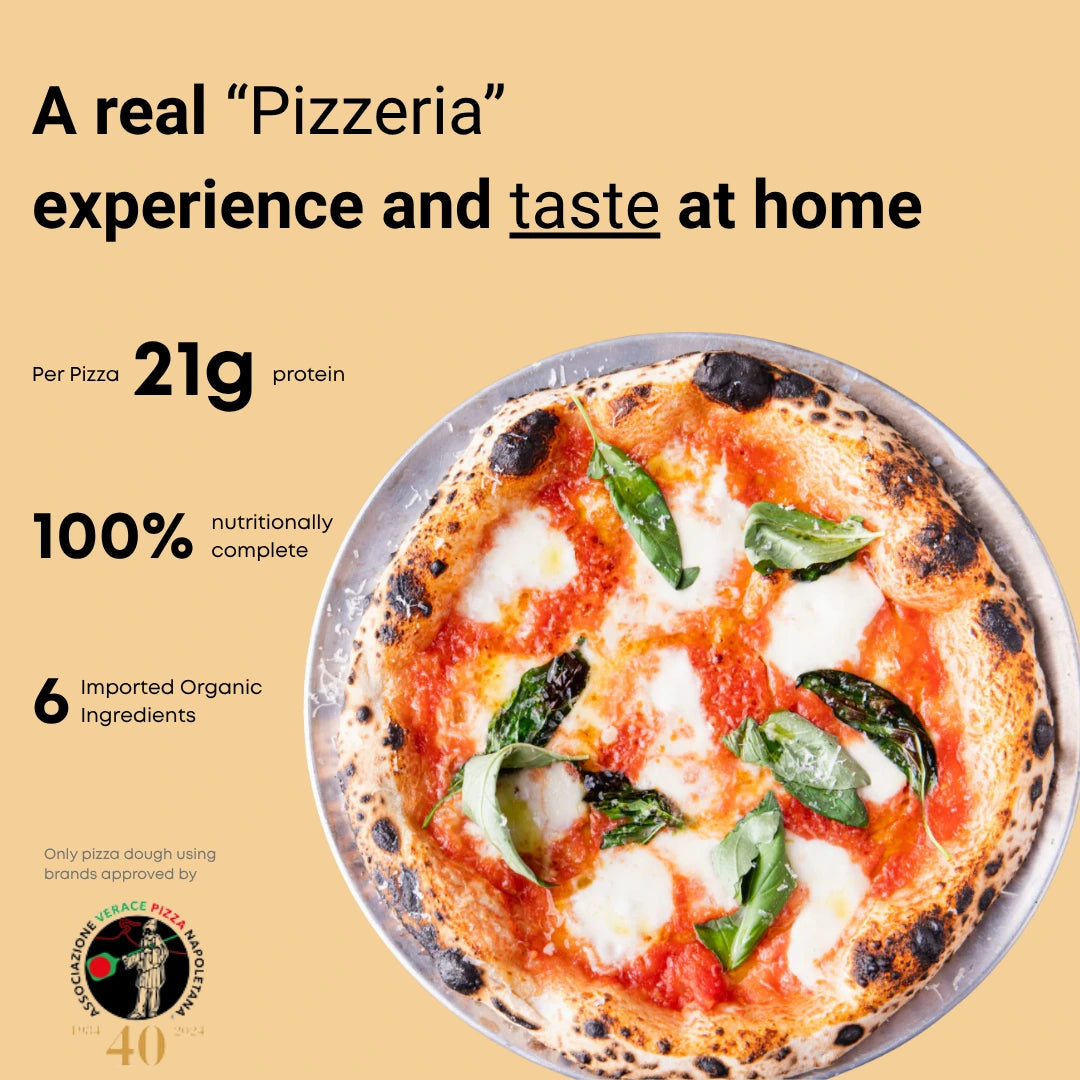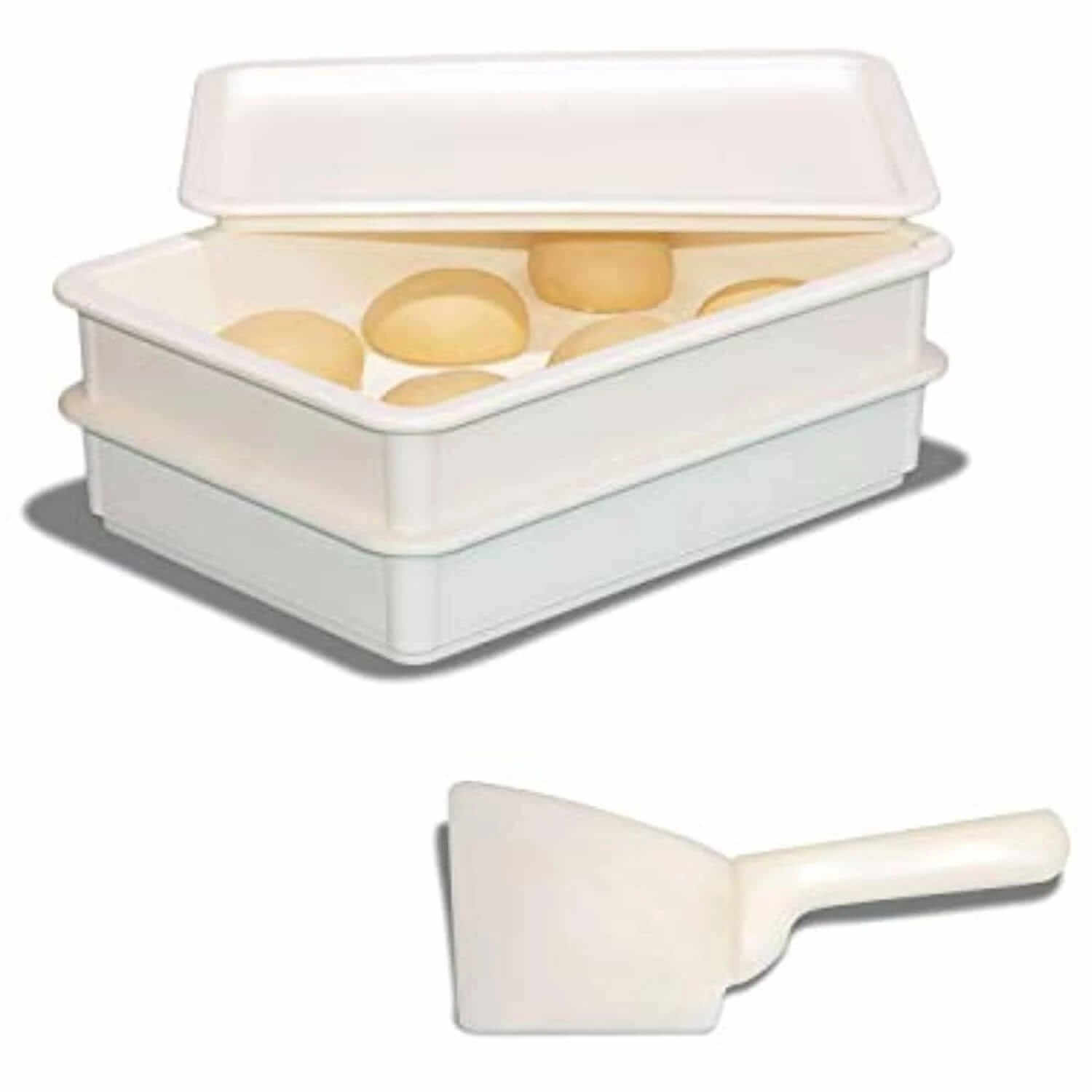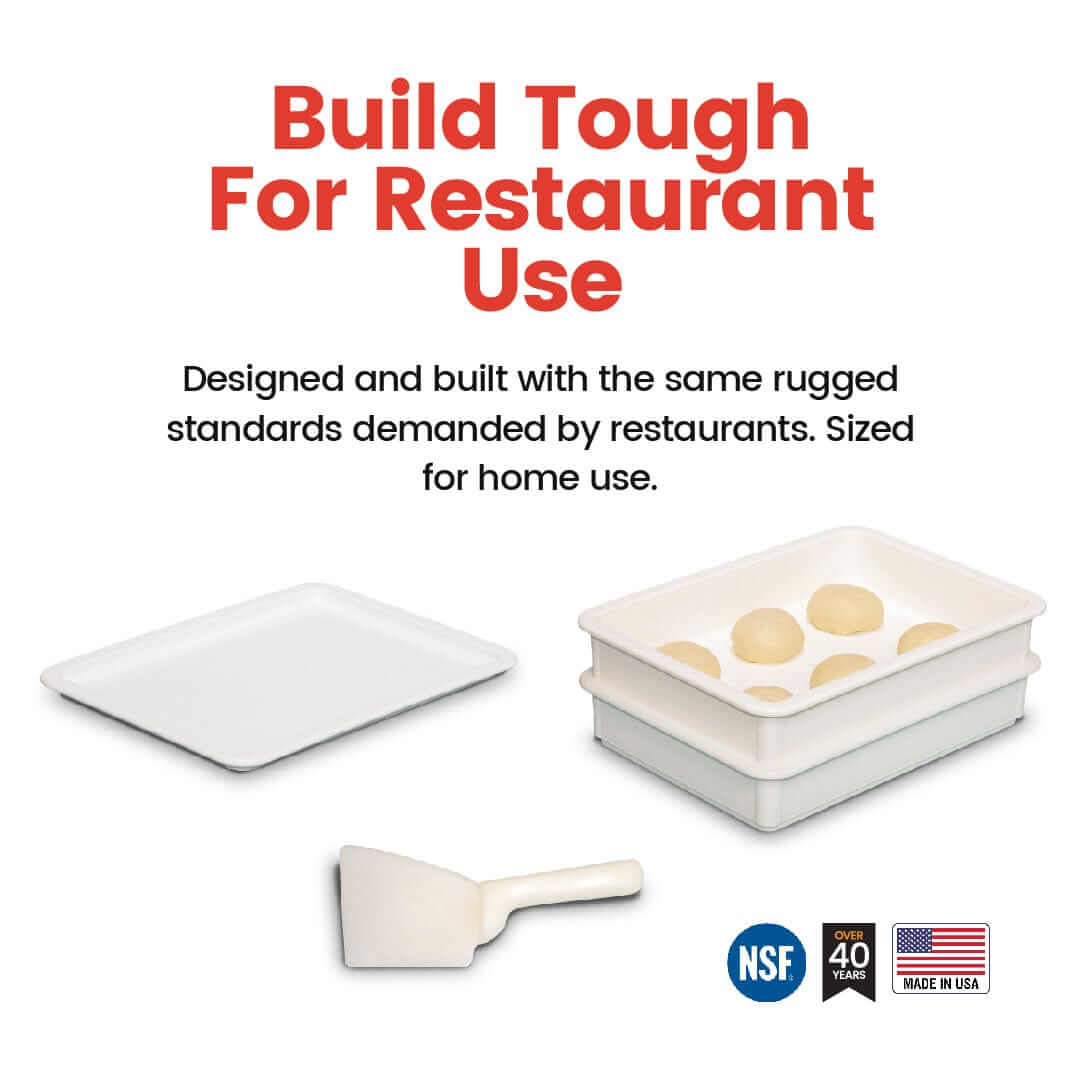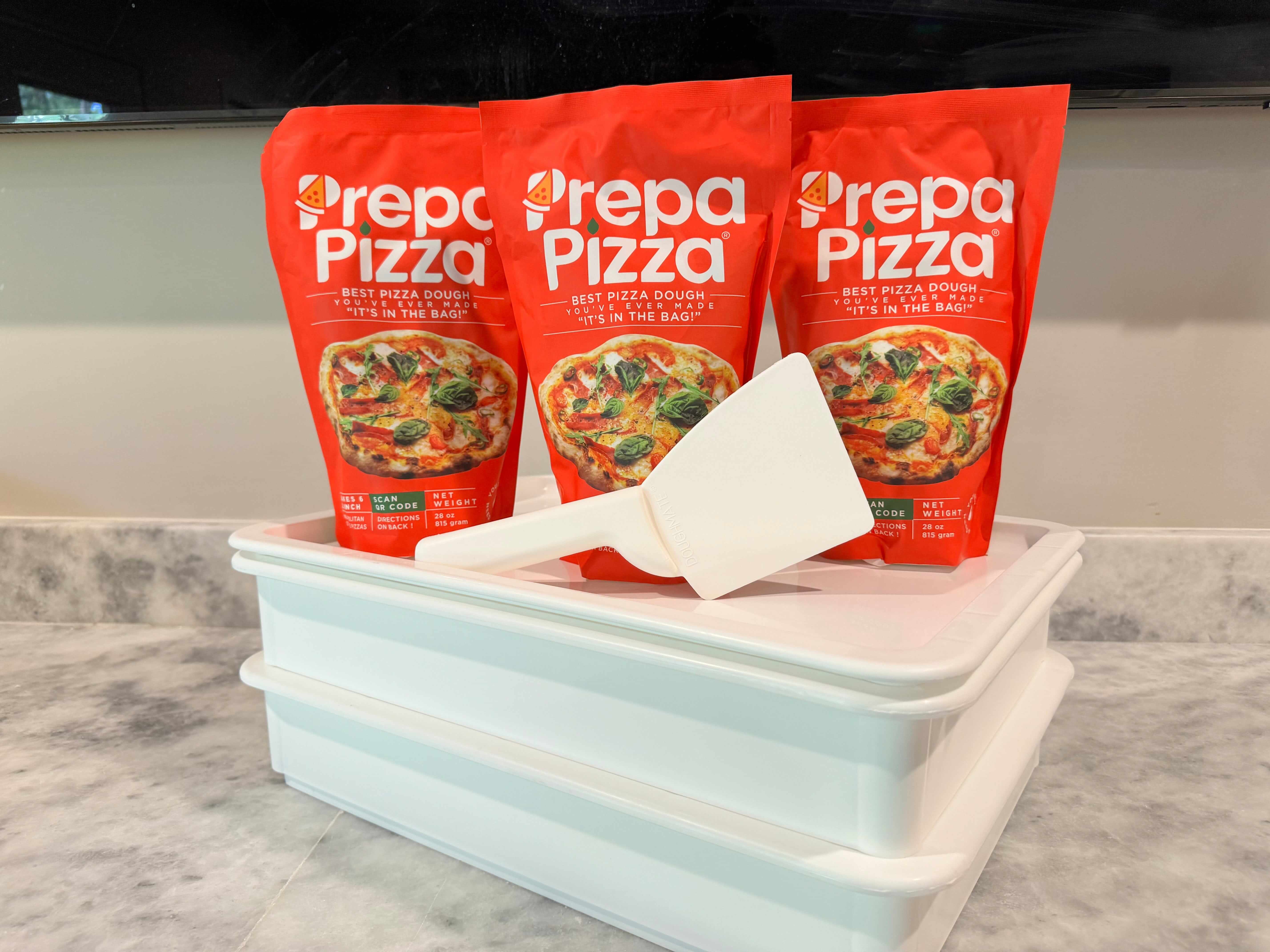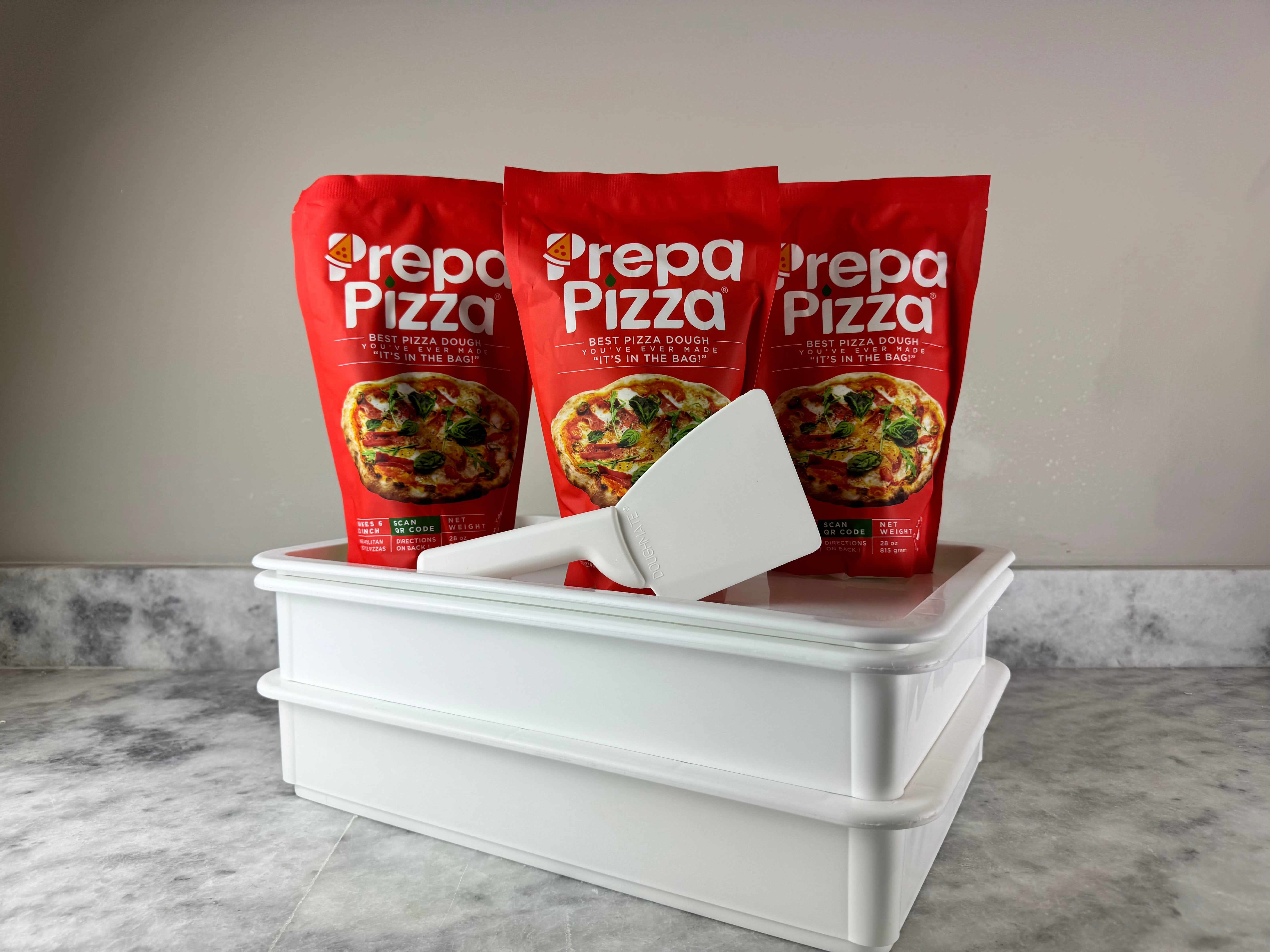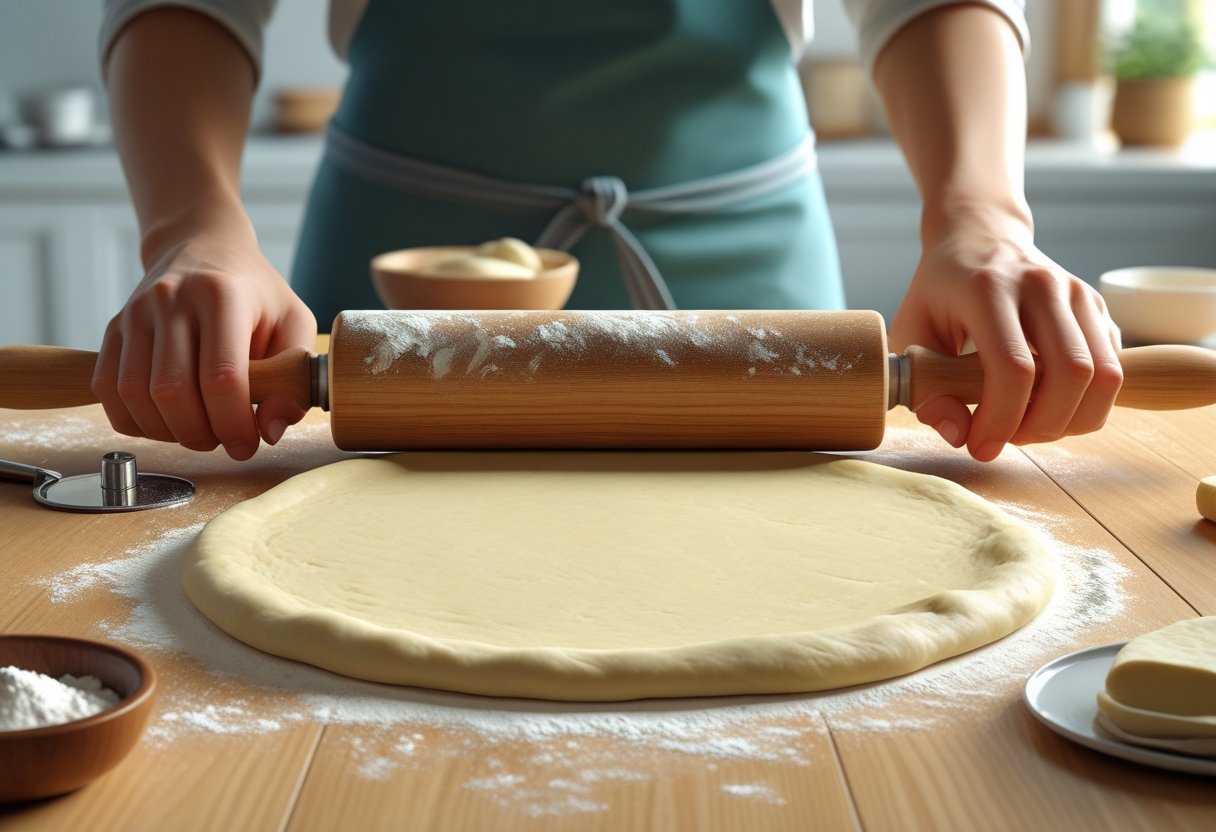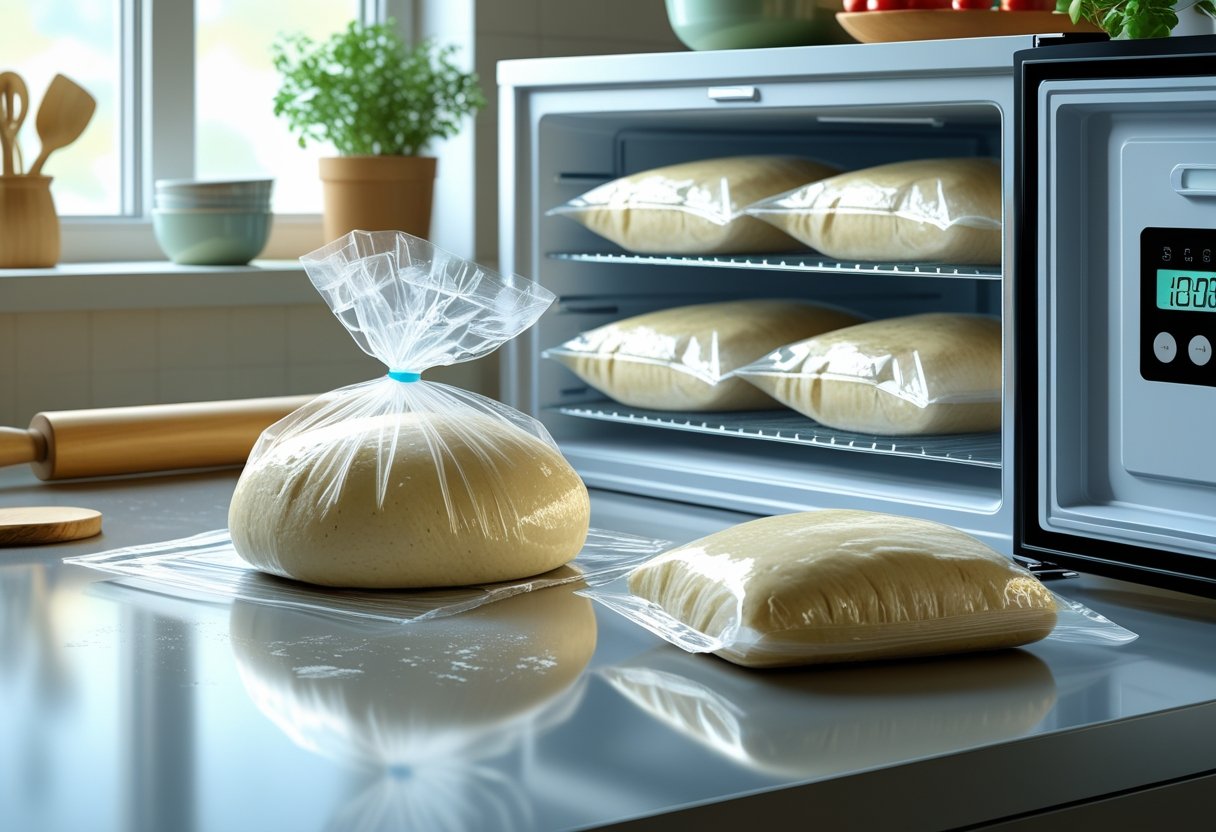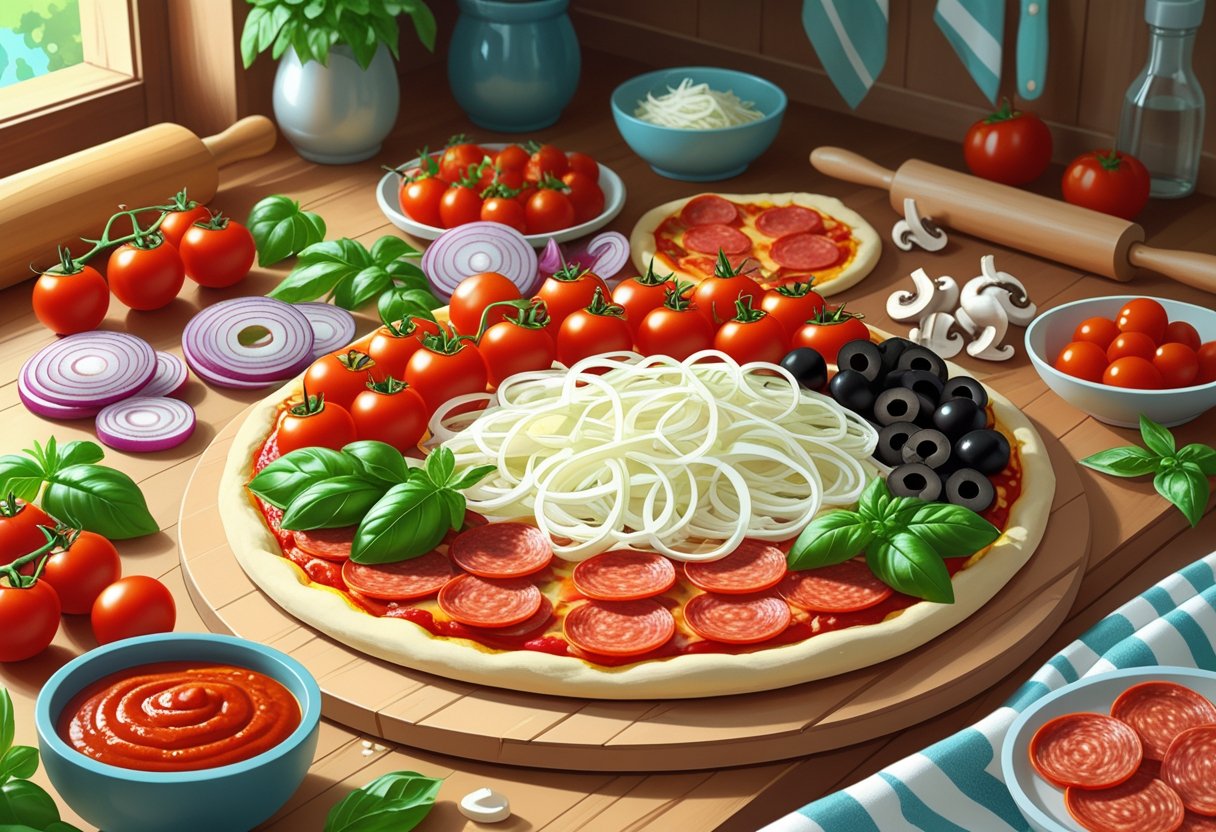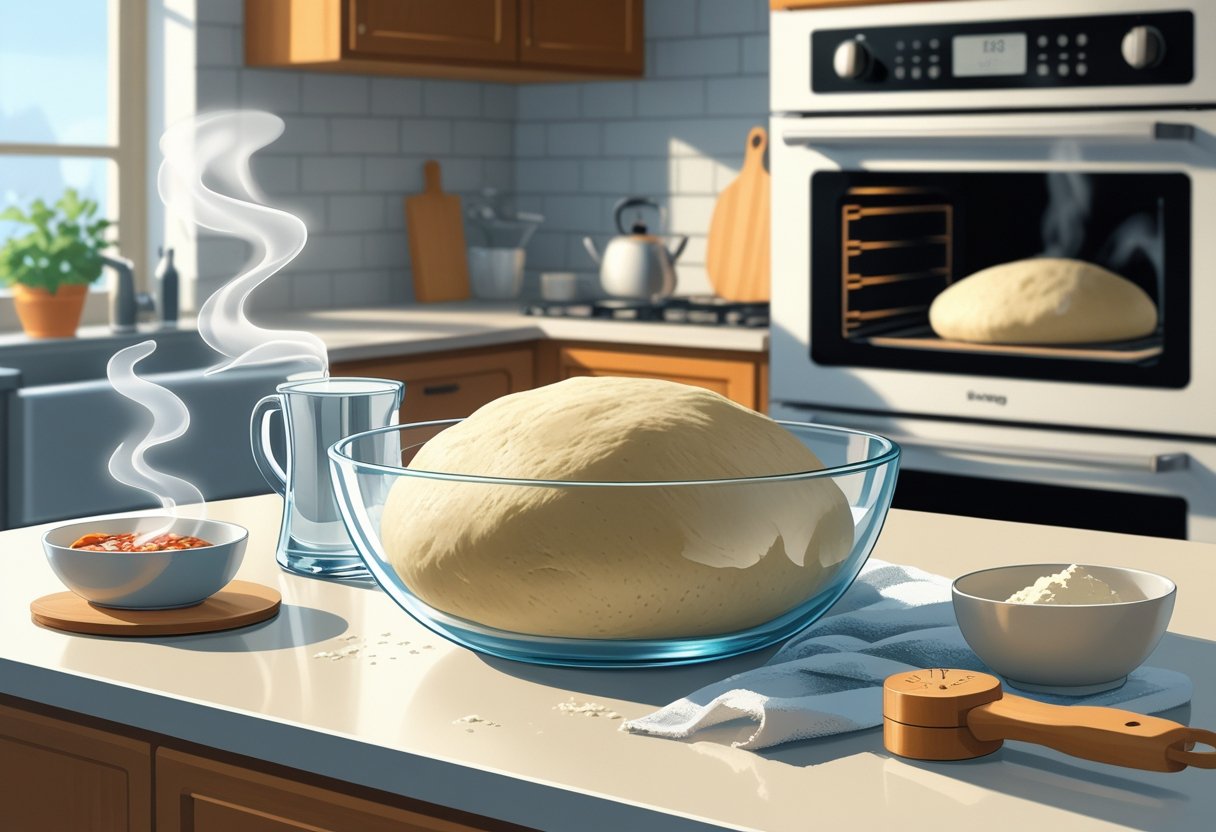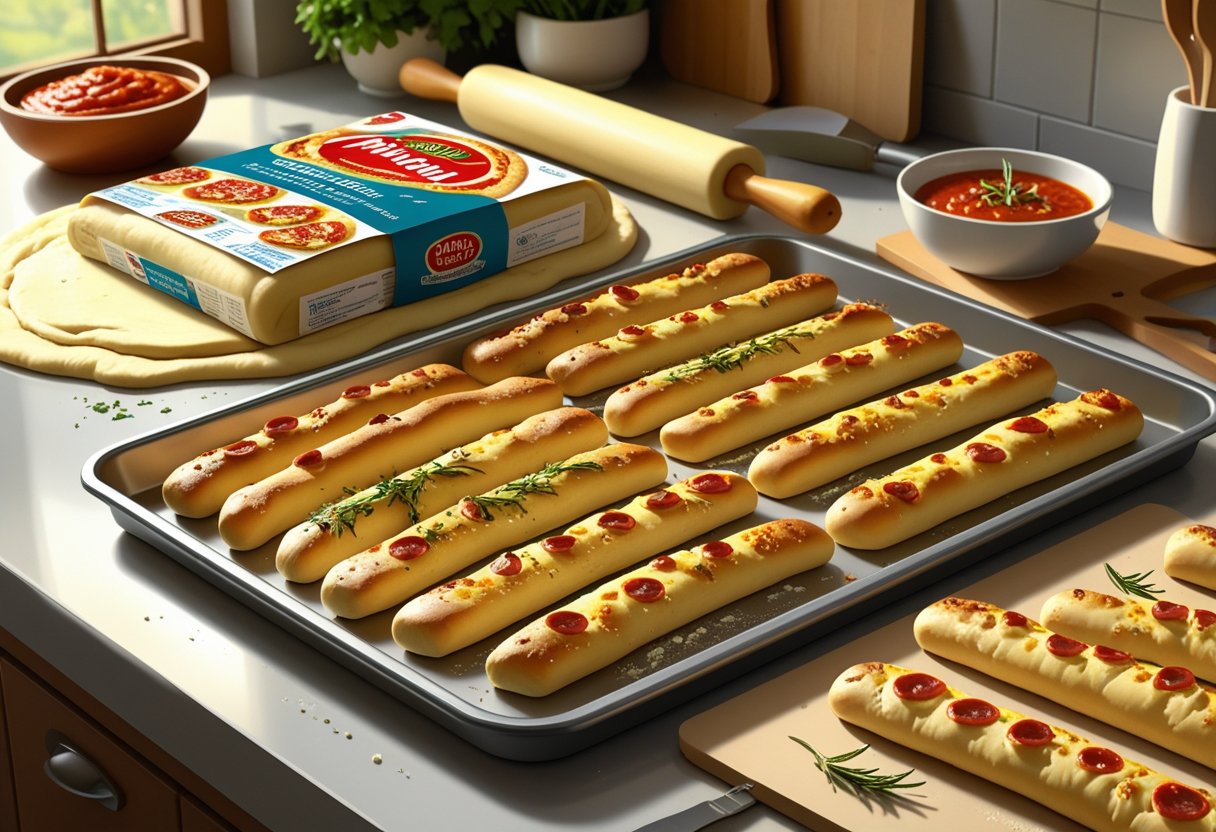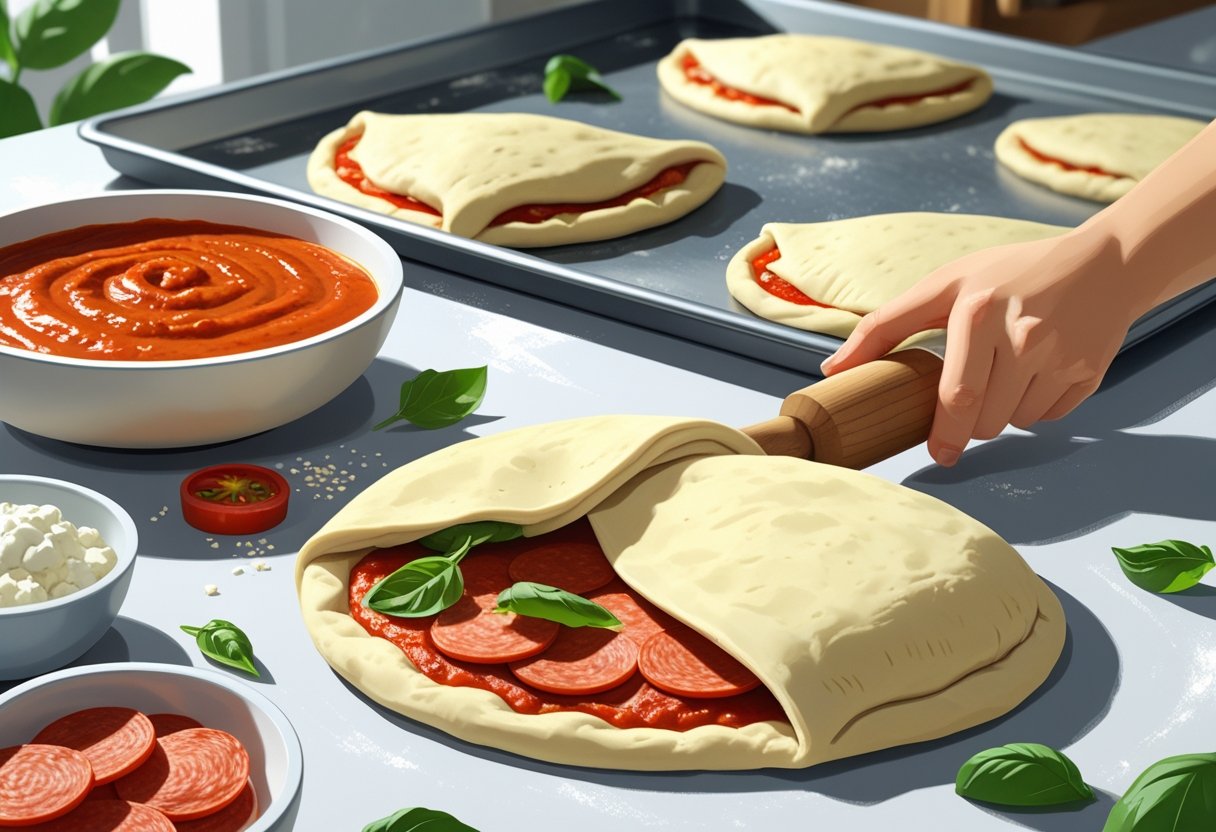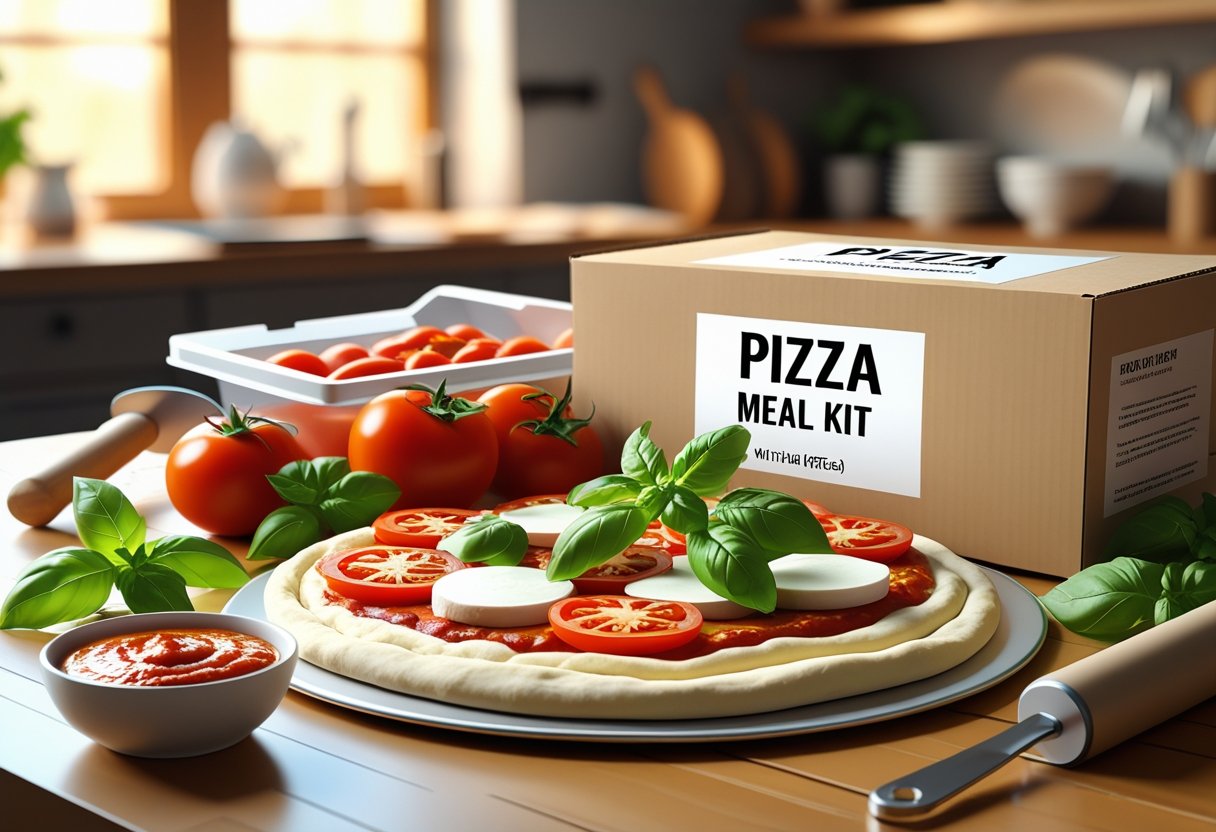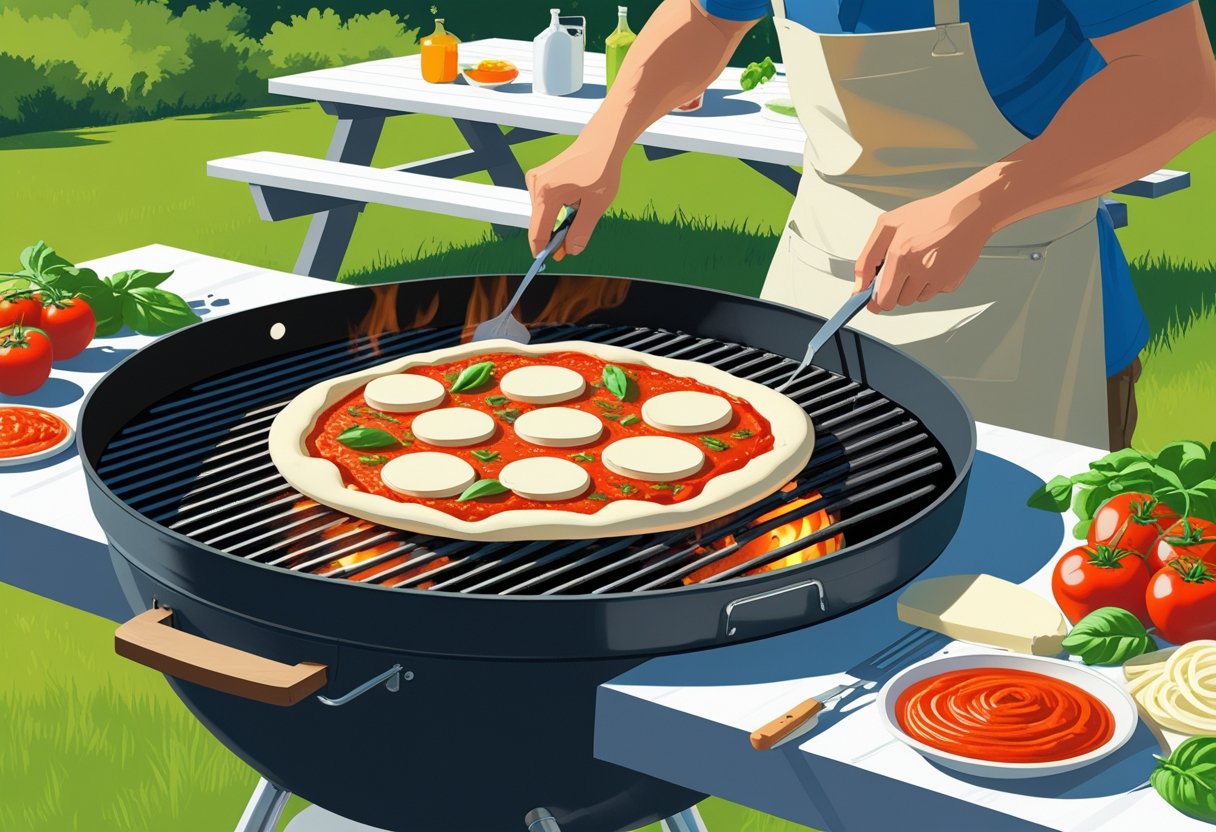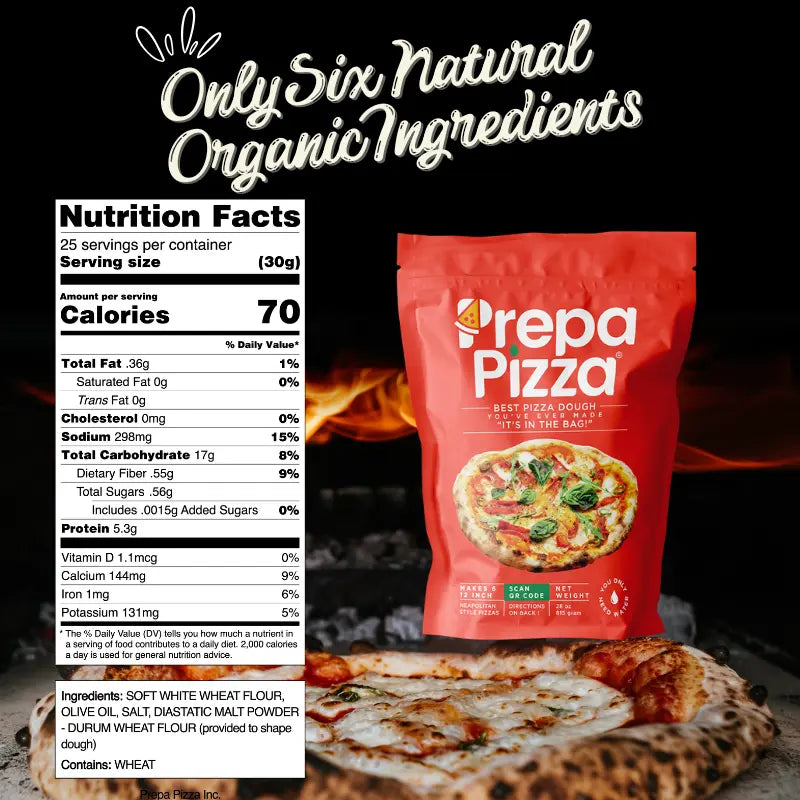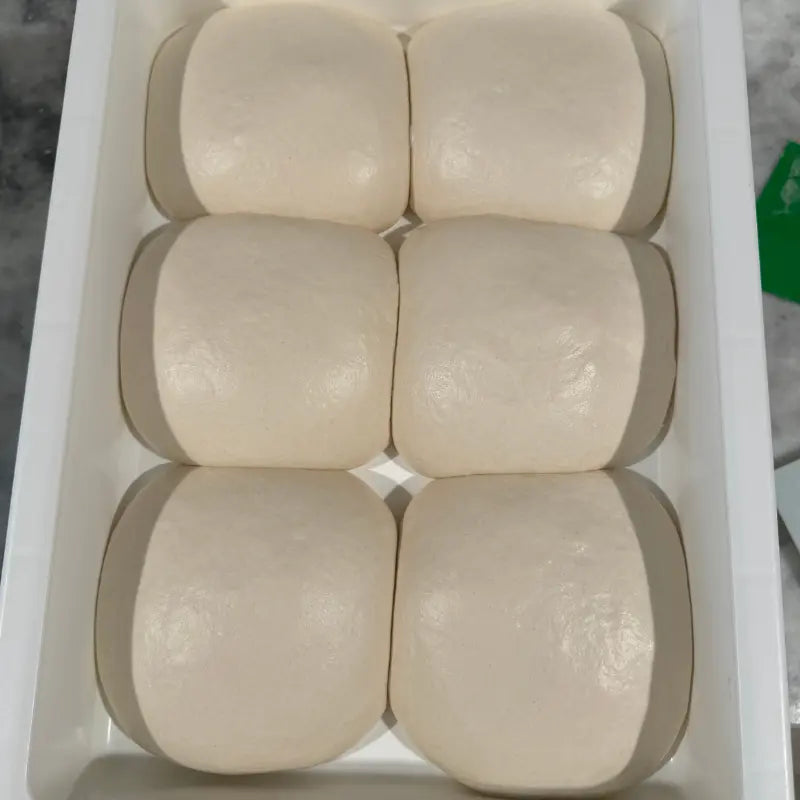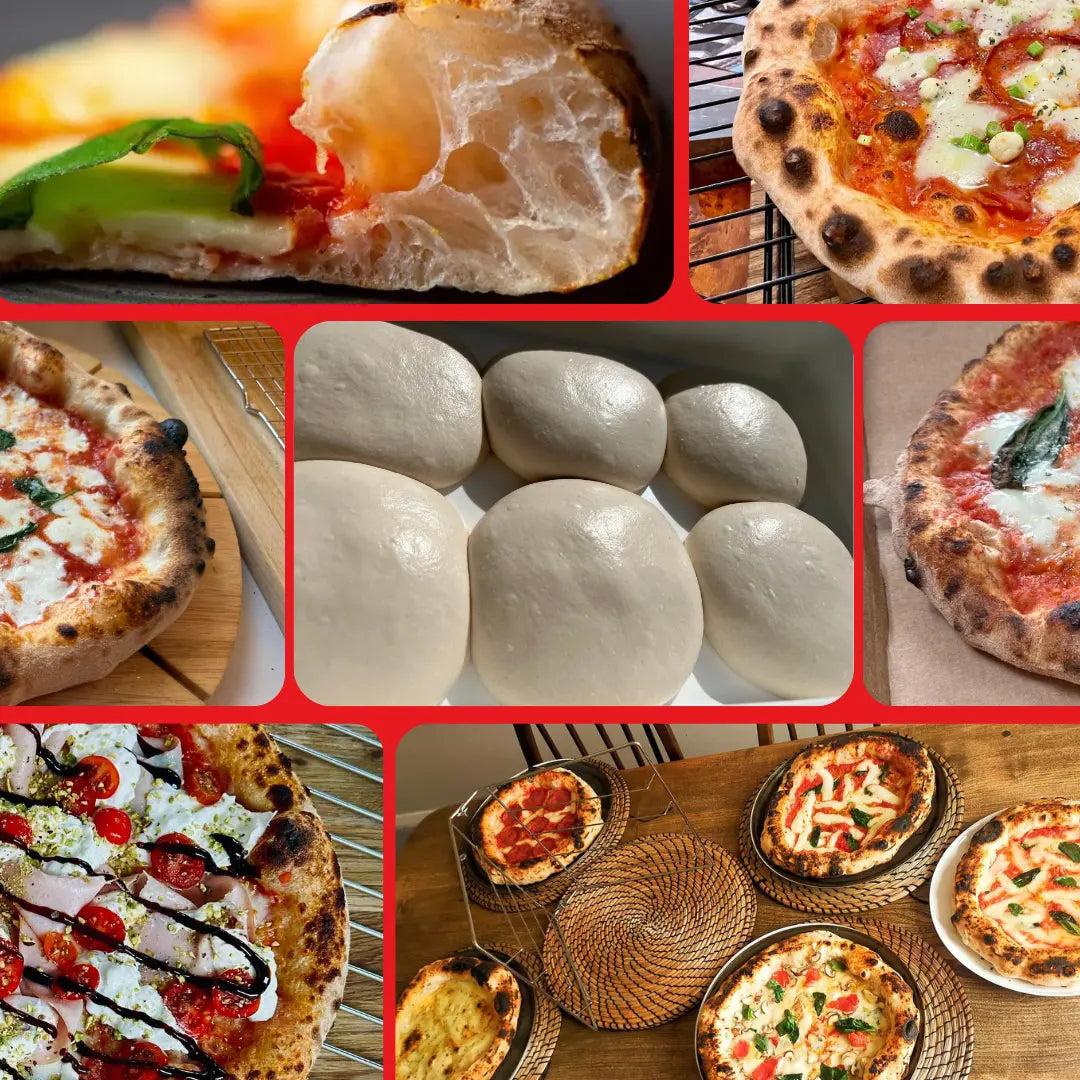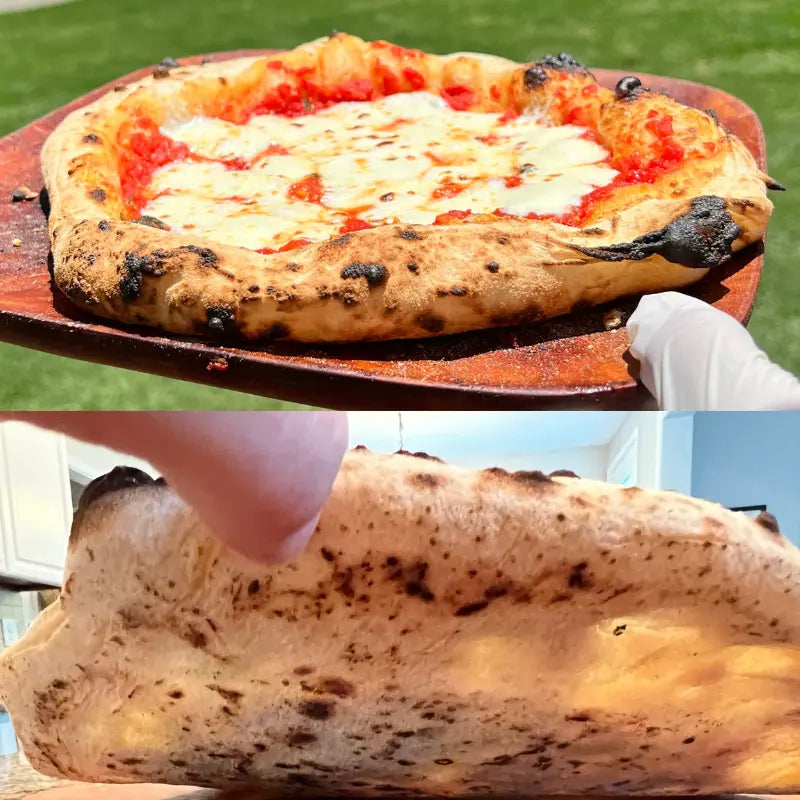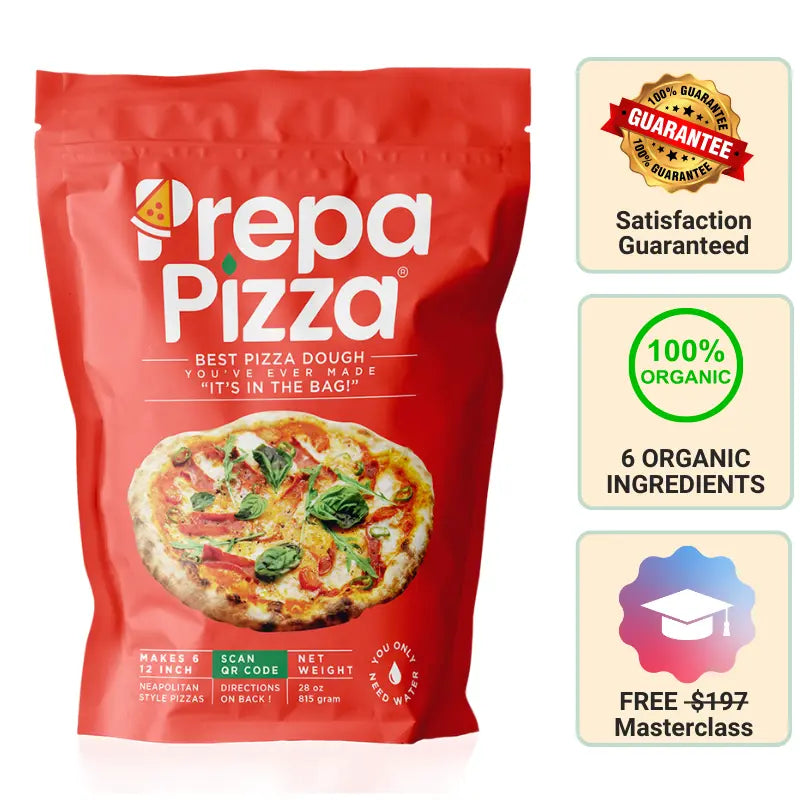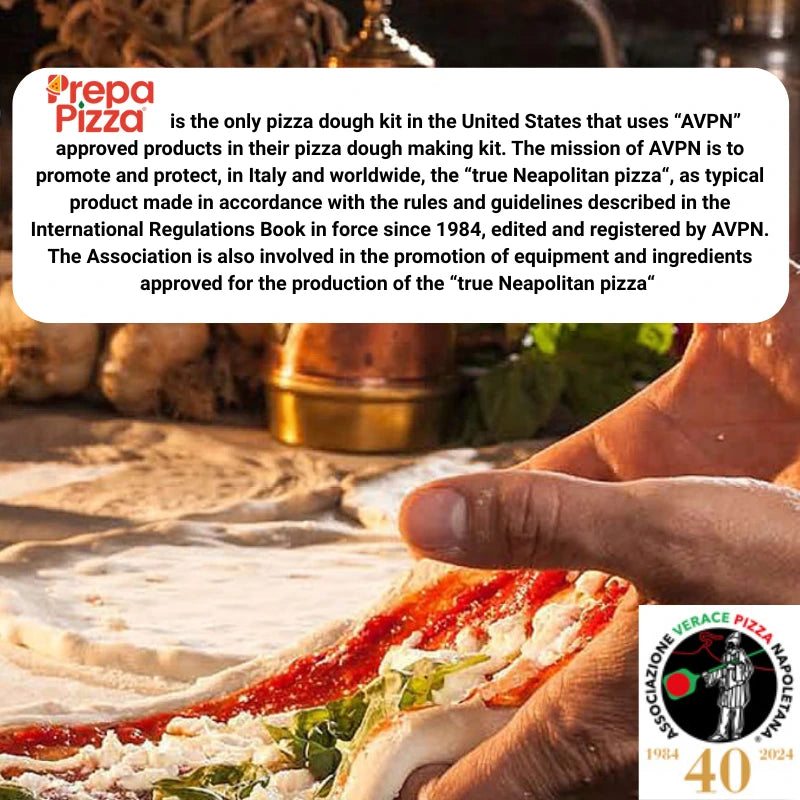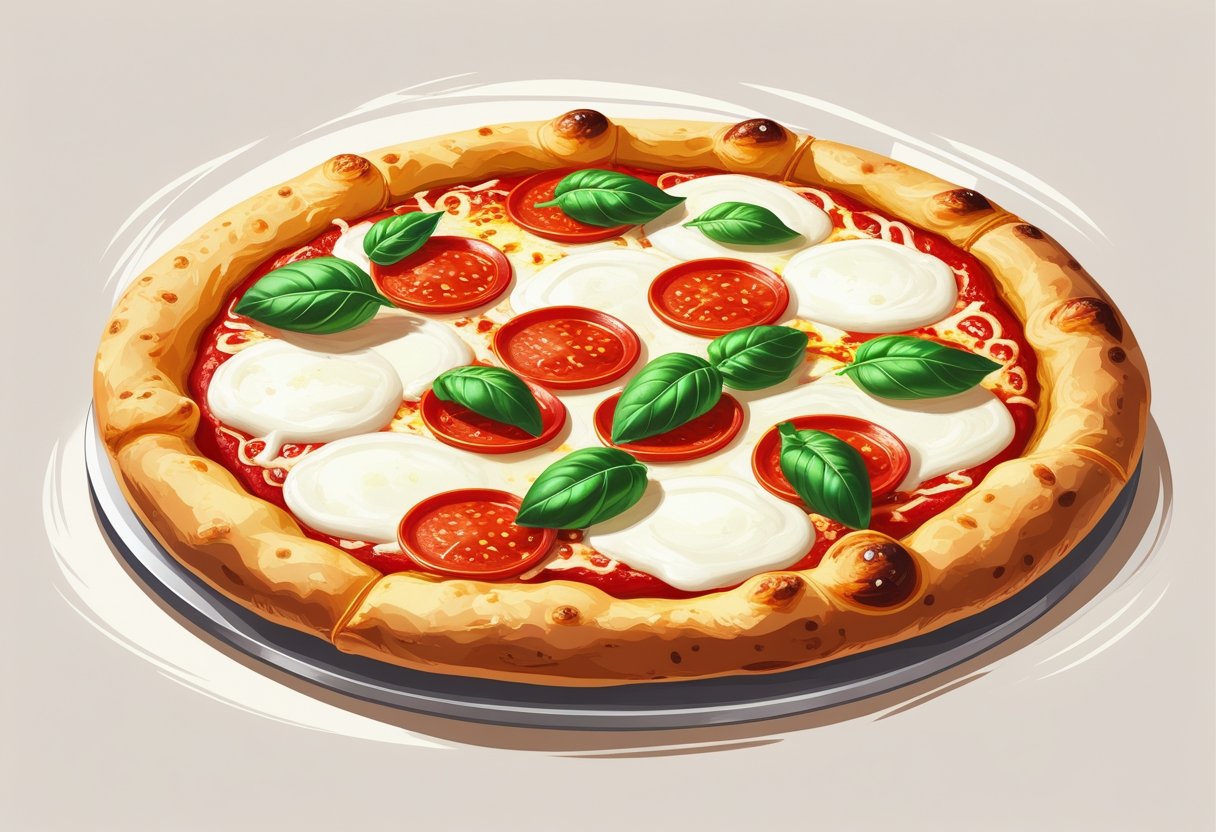
Chewy Base Pizza: The Secret to Perfectly Textured Crust
Creating a delicious chewy base pizza starts with the right dough. With Prepa Pizza's premade dough, you can achieve that perfect balance of crispiness on the outside and chewiness on the inside. This high-quality dough is designed to elevate your pizza-making experience, making it easy for anyone to create a restaurant-style pie at home. You can find our premium dough options here.
The secret to achieving that coveted chewy texture lies in hydration levels and fermentation techniques. By adjusting these variables, you can customize your pizza dough to meet your preferences and impress your family or friends. With Prepa Pizza's premade dough, you simplify the process without sacrificing quality, allowing you to enjoy the art of pizza-making with ease.
As you explore how to make the perfect chewy base pizza, you’ll discover tips and tricks that will enhance not just the texture, but also the overall flavor of your homemade pizza. Get ready to transform your pizza nights into something extraordinary with a base that’s both satisfying and delicious!
Understanding Chewy Base Pizza
Chewy base pizza is characterized by its unique texture, which often enhances the overall taste experience. Understanding the factors that contribute to this chewiness will help you create or select the perfect pizza for your preferences.
You can achieve a fantastic chewy pizza crust using Prepa Pizza’s premade dough. This high-quality dough, crafted from premium ingredients, allows you to create a pizzeria-style pizza right at home. You can explore more about it here.
What Makes Pizza Chewy
Several elements contribute to the chewiness of pizza. The primary factor is gluten, a protein that forms when flour is mixed with water. Higher gluten content means a more elastic and chewy dough.
Proper hydration levels also play a crucial role. Adjusting the amount of water in your dough can create a balance that enhances its chewiness.
Additionally, the fermentation time significantly impacts the final texture. Allowing the dough to ferment adequately can develop flavors and improve its chewiness.
Difference Between Chewy and Crispy Crust
The distinction between chewy and crispy crust lies in the preparation and ingredients used. Chewy crusts often have a more substantial hydration and gluten formation, resulting in a denser texture.
In contrast, crispy crusts utilize lower hydration levels and may incorporate high-gluten flour, leading to a firmer texture. Baking techniques also differ; crispy crusts benefit from high temperatures, while chewy crusts often bake at moderate temperatures for longer periods.
Science Behind Chewy Texture
The science behind a chewy texture involves understanding gluten development and hydration. When making pizza dough, gluten proteins create a network that gives the dough elasticity.
Hydration is equally important; yeast activity increases when the dough has the right moisture level, affecting fermentation. This interplay results in a flavorful, chewy texture.
By using Prepa Pizza’s premade dough, you set the stage for a successful pizza preparation, ensuring that your crust achieves that desirable chewiness that complements a range of toppings.
Key Ingredients for Chewy Pizza Dough
Creating a chewy pizza dough requires attention to several key ingredients. Each component plays a vital role in ensuring the perfect texture and flavor. By understanding how to select and use these ingredients effectively, you can achieve a high-quality dough similar to that of your favorite pizzerias. For convenience, consider using Prepa Pizza’s premade dough for consistent quality.
Choosing the Right Flour
The choice of flour is crucial for achieving that desired chewy texture. For pizza, bread flour is often preferred due to its higher protein content compared to all-purpose flour. This higher protein helps create a stronger gluten structure, which contributes to chewiness.
If you want an even more authentic taste, consider using 00 flour, which is finely milled and commonly used in traditional Italian pizzas. It absorbs water well, giving your dough a lighter and chewier quality.
When selecting flour, check for terms like "high-protein" or “strong flour” on the packaging, as these indicate ingredients better suited for making the perfect chewy pizza dough.
Using Water and Salt Effectively
Water is another foundational ingredient in pizza dough. The hydration level affects not just texture but also flavor. Using warm water (around 110°F) activates the yeast more effectively, which can lead to better rise.
Salt, often overlooked, is just as important. It strengthens gluten and enhances flavor. Aim for about 1.5% to 2% of your flour weight in salt; for instance, if you're using 500g of flour, add around 7.5g to 10g of salt. This balance ensures the dough is flavorful without overwhelming it.
Adjusting these components will improve the chewy texture you desire without making the dough overly dry or dense.
Importance of Yeast and Sugar
Yeast is the driving force behind the fermentation process. You can choose between active dry yeast and instant yeast, both effective in making dough rise. Instant yeast offers the advantage of faster activation, while active dry yeast may require proofing in water beforehand to ensure it’s alive.
Adding a small amount of granulated sugar can also stimulate yeast activity, giving your dough a slightly sweet flavor and promoting browning in the crust. Typically, 1 to 2 tablespoons of sugar per batch will suffice. This small addition makes a noticeable difference in the overall quality of your pizza.
Role of Olive Oil
Including olive oil in your dough can significantly enhance the final product. Oil adds richness and aids in creating a tender crumb while providing a crispier crust.
When using olive oil, aim for about 2 tablespoons for every 500g of flour. This quantity ensures that your dough remains moist while preventing it from becoming too sticky.
Using high-quality olive oil not only enhances flavor but will also deliver a restaurant-quality pizza with every bite. This ingredient works harmoniously with the flour, water, and yeast to achieve that ideal chewy texture.
Mastering the Dough-Making Process
Creating a chewy pizza base begins with a few key techniques in the dough-making process. Proper kneading, controlled fermentation, and careful handling of the dough balls are essential for achieving the perfect texture. Utilizing Prepa Pizza’s premade dough ensures a quality start to your pizza journey, allowing you to focus on mastering these vital steps.
Proper Kneading for Chewy Texture
Kneading is crucial for developing gluten, which gives the dough its chewy characteristic. You can knead by hand or use a stand mixer with a dough hook attachment for efficiency.
- Kneading Time: Aim for about 10 minutes if kneading by hand; 6-8 minutes with a stand mixer.
- Texture Check: The dough should become smooth and elastic.
Feel for the dough; it should spring back when pressed. Remember not to over-knead, as this can lead to a tougher texture instead of a chewy one.
Dough Rise and Fermentation
Allowing your dough to rise and ferment significantly enhances its flavor and texture. This process is essential for developing the right chewiness.
- First Rise: Let the dough rest until it doubles in size, usually taking 1-2 hours at room temperature. This slow rise encourages optimal flavor development.
- Cold Fermentation: For even more complex flavors, place the dough in the refrigerator for up to 72 hours.
This slow fermentation process breaks down starches and sugars, improving chewiness in the final product.
Dividing and Handling Dough Balls
Once your dough has risen, it is important to handle it correctly to maintain its structure. Properly dividing the dough into balls is key.
- Cutting: Use a bench scraper to divide your dough into equal portions; around 250 grams is ideal for individual pizzas.
- Shaping: Gently tuck the edges of each portion towards the center to form a tight ball.
Be sure to let the dough balls rest for at least 30 minutes before stretching them into your pizza base. This relaxes the gluten, making it easier to shape without tearing.
Baking Techniques for the Perfect Chewy Base
To achieve a chewy pizza base, specific baking techniques play an essential role. Utilizing the right equipment and methods ensures that your pizza crust reaches its ideal texture and flavor. Here are essential tips to consider.
Using a Pizza Stone or Baking Steel
Investing in a pizza stone or baking steel drastically improves your homemade pizza. These materials retain and distribute heat evenly, creating a crispy base while maintaining chewiness.
Before baking, preheat your oven with the stone or steel inside for at least 30 minutes. This intense heat helps to achieve the desired crust texture. If you have chosen Prepa Pizza’s premade dough, it can withstand high temperatures, making it perfect for these techniques. The result is a delightful balance of crunch and chewiness that you will love.
Achieving the Right Oven Temperature
The optimal temperature for baking pizza is between 475°F to 500°F (245°C to 260°C). At these temperatures, the dough cooks quickly, creating a crispy exterior while keeping the interior soft.
Using an oven thermometer can help you achieve precise settings, ensuring consistency for every pizza you bake. The humidity levels in the oven may also affect the crust’s texture. A drier oven contributes to a crispier finish. To monitor this, consider using a pan of water or ice cubes in the oven, providing just the right amount of steam during baking.
Transferring Pizza with a Pizza Peel
Using a pizza peel is crucial for transferring your pizza in and out of the oven. This tool allows for easy handling, ensuring the base doesn’t lose its shape while baking.
Before adding your pizza to the peel, dust it with flour or cornmeal to prevent sticking. This step is essential, as it facilitates a smooth transfer to the hot stone or steel. When your pizza is ready, you can slide it directly onto the preheated surface, giving it a great chance to develop that chewy, delectable crust you desire.
Customizing Your Chewy Base Pizza
Creating a chewy base pizza allows you to express your culinary creativity, focusing on sauce, cheese, and toppings that enhance its unique texture. Using high-quality premade dough, like that from Prepa Pizza, sets the foundation for a delicious meal.
Selecting Pizza Sauce and Cheese
The sauce and cheese are crucial to your pizza's flavor profile. Traditional options include a rich tomato sauce, but feel free to experiment with alternatives, like pesto or barbecue sauce, for a different twist.
For cheese, mozzarella is a classic choice due to its melting properties and mild flavor. Adding a blend of parmesan or asiago can elevate the taste. Consider sprinkling garlic powder into your sauce for an extra flavor boost.
Favorite Toppings for Chewy Pizza
Toppings can make or break your chewy pizza experience. Classic favorites like pepperoni, mushrooms, and bell peppers are always crowd-pleasers. You can also try unique combinations, such as figs with goat cheese or balsamic glaze drizzled over arugula.
Create a balanced pizza by distributing toppings evenly across the dough. Avoid overloading it; too many toppings can make it soggy. The goal is to enhance the chewy texture without overwhelming the base.
Exploring Calzone Variations
Transforming your pizza into a calzone is a great way to customize it. A calzone, essentially a folded pizza, allows for creative stuffing options that encapsulate flavors.
You can fill your calzone with ingredients similar to your favorite pizza toppings. Try combinations like ricotta cheese, spinach, and artichokes for a vegetarian option, or classic meatball and cheese for a hearty bite. The chewy dough from Prepa Pizza holds up well, ensuring your calzone remains sturdy and flavorful.
Storage Tips and Troubleshooting
Proper storage and handling of pizza dough are essential for achieving that ideal chewy base in your homemade pizza. With the right techniques, you can maintain freshness, flavor, and texture. Here are key strategies to ensure your dough stays perfect.
Refrigerating and Freezing Pizza Dough
To maximize the shelf life of your homemade pizza dough, refrigeration is a great option. Store your dough in a well-sealed container or wrap it tightly in plastic wrap. This prevents it from drying out, ensuring a quality rise time. Refrigerated dough can last up to 5 days.
For longer storage, you can freeze pizza dough. Portion the dough into smaller balls and wrap each piece in plastic wrap, then place them in a freezer bag. This method keeps the dough fresh for up to 3 months. When you're ready to use your easy pizza dough, thaw it overnight in the refrigerator or for a few hours at room temperature.
Consider using Prepa Pizza's premade dough for convenience. Their dough is crafted with quality ingredients, making it easy to have delicious homemade pizza on hand. Check out the premade dough options here.
Common Dough Issues and Solutions
You might encounter a few issues when working with pizza dough. Some common problems include overly sticky dough or dough that doesn’t rise properly.
-
Sticky Dough: If your dough is too sticky, you may need to knead in a little more flour. Make sure you flour your work surface well during preparation.
-
Not Rising: Ensure your dough is in a warm environment to help it rise. If it’s too cold, consider placing it near a warm oven. If using easy pizza dough recipes, you still need to allow adequate rise time.
These simple adjustments can greatly enhance the quality of your perfect pizza dough.
Adapting for Easy Pizza Dough Recipes
Making adjustments to your methods can simplify the dough-making process. For an easy pizza dough recipe, try using a high-protein flour. This lends the dough strength and chewiness.
Using Prepa Pizza’s premade dough eliminates much of the hassle. Simply follow the instructions, and you can have a delicious, chewy pizza base in no time. If you prefer thin crust pizza, roll the dough thinner and adjust baking times accordingly.
These adaptations will make your pizza-making experience more enjoyable and successful.
Frequently Asked Questions
Creating a chewy pizza base at home is achievable with the right techniques and ingredients. Understanding how to manipulate dough properties and utilizing quality premade dough options can significantly enhance your pizza-making experience. Consider using Prepa Pizza's premade dough that offers restaurant-quality results easily.
Crafting the perfect chewy pizza dough involves several key factors that you should keep in mind. Here are some common questions and their answers to help you in your pursuit of the ideal chewy crust.
How can I make a chewy pizza dough at home?
To create a chewy pizza dough, you'll want to focus on hydration and kneading. Use a higher water content in your dough and ensure it's well-kneaded to develop gluten, which provides that desired chewiness. You can also let the dough rest longer for improved texture.
What are the secrets to achieving a chewy texture in pizza dough?
The primary factors to achieving chewy pizza dough are flour type, hydration level, and fermentation time. Use high-protein flour for gluten development, maintain a moderate hydration level, and allow your dough to ferment longer to enhance flavor and texture.
Which type of flour is best for making a chewy pizza crust?
Bread flour is the most suitable choice for making a chewy pizza crust due to its higher protein content. Alternatively, you can blend all-purpose flour with a bit of vital wheat gluten to achieve similar results. Using flour of the right quality is crucial for texture.
Can I use a bread machine to make chewy pizza dough?
Yes, a bread machine can be effective for making chewy pizza dough. Set it on the dough cycle to ensure proper kneading. Monitor hydration levels to maintain the desired chewiness. Using quality ingredients like those found in Prepa Pizza's offerings can also aid in the process.
What is an artisan pizza dough recipe that will yield a chewy crust?
An artisan pizza dough recipe typically includes flour, water, yeast, and salt. The key is to mix well, allowing for a longer fermentation period. This method encourages the development of flavor and texture, creating a delightful chewiness in the crust.
How long should I let my pizza dough rest to ensure a chewy base?
Resting your pizza dough for at least 1 to 2 hours at room temperature is ideal. For enhanced flavor and chewiness, consider a cold fermentation in the refrigerator for 24 hours or more. This allows gluten to develop fully, resulting in a superior crust.

